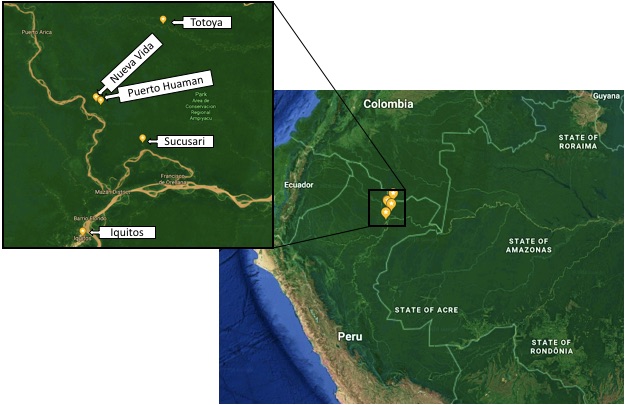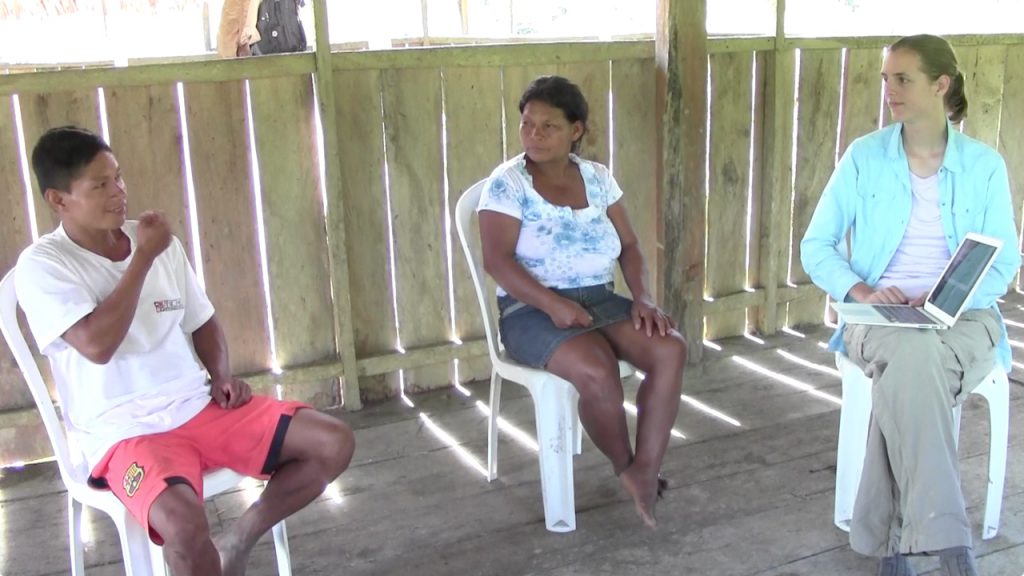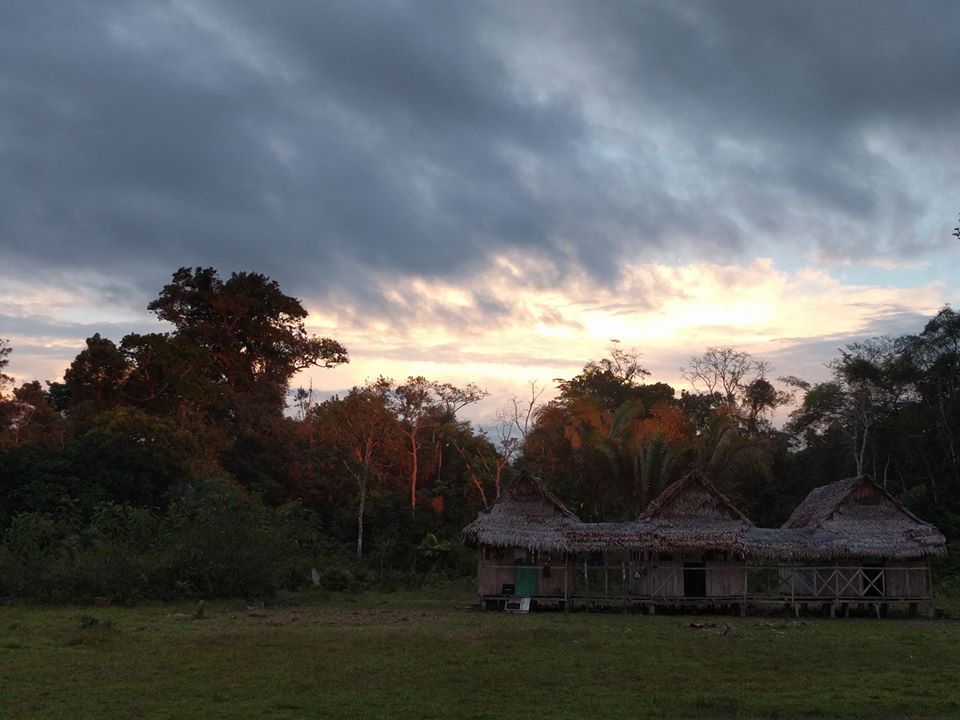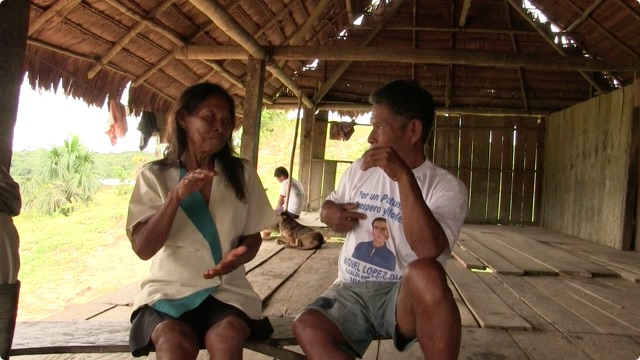When Deafness Is Not Considered a Deficit
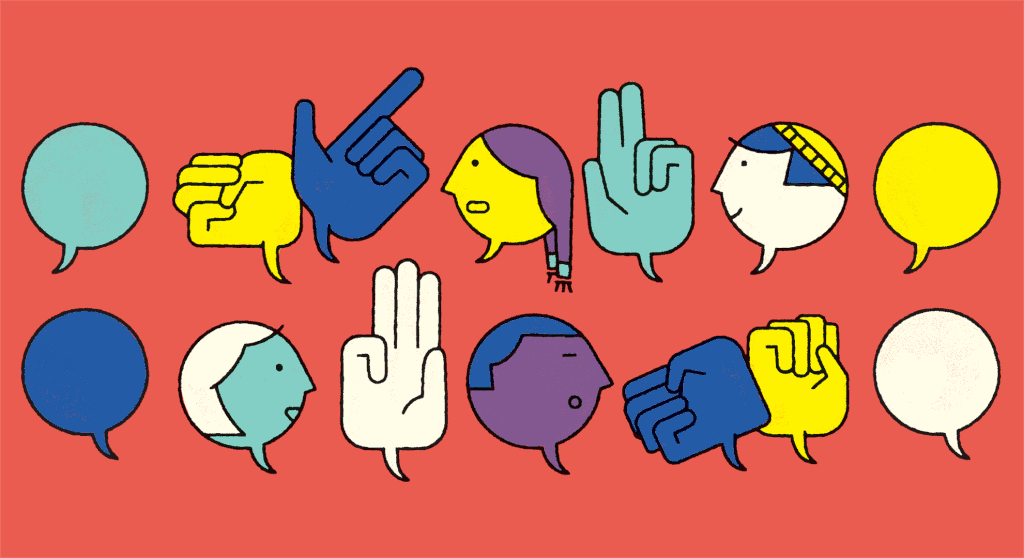
Music rattled the windows of the one-room schoolhouse that was now serving as a dance floor for nearly the entire village, a population of about 100 people. Masato, a masticated yuca drink, was passed around the room. I tried to refuse it as it came to me—I had already shared an entire pot and was feeling woozy from both the alcohol and my full stomach. But this was a celebration and another bowl was pressed into my hands.
The party was the last night of my first field trip to the Amazon in 2012. I had spent nine weeks in Nueva Vida, one of four Maijuna villages, near a tributary off the Napo River in Loreto, Peru. This first trip was to study Maijiki, the spoken language of the Maijuna, an Indigenous Western Tucanoan people of the Peruvian Amazon. As I sipped the yuca drink and watched the party, one pair in particular caught my interest. The interaction was between two men, one who lived in the village and one who did not. What made this conversation worth noting was that one of these men, Raul, a 27-year-old, was deaf, and the entire conversation was being conducted in signs and gestures. [1] [1] Pseudonyms have been used to protect people’s privacy. (I do not use the conventional d/Deaf to distinguish between the medical condition of hearing loss and the cultural Deaf identity because the Maijuna do not have the same notion of “Deaf culture.”)
Fascinated by the questions that arose from that interaction, I would return to the Maijuna communities three more times in the following years to study the gestural communication system I first observed at the party. I had many questions to seek answers to: How did the hearing man know these signs when he didn’t live in the same village? Were they just gesturing to each other, making it up as they went along, or was this an established sign language used by the Maijuna? Did all Maijuna know the sign language? This investigation of the sign system used by the Maijuna formed the basis of my doctoral research in linguistics.
At first, it was difficult to find out whether there were other deaf people in the community. I asked about personas sordas (deaf people), which turned out to be the wrong route. Everyone insisted that Raul was the only deaf person they knew. Six weeks into my second trip, one of my research participants showed me an old photo album. He pointed out Simón, a 60-year-old man who lived in another Maijuna village, and informed me that he was like Raul and that he signed.
After I inquired specifically about Simón, everyone agreed that he signed. There was, however, some discussion about whether or not he was even deaf. I learned valuable information that day about how deafness is viewed by the Maijuna: The salient characteristic is that you can’t speak, not that you can’t hear. I would have found more success had I asked about people who spoke with their hands because the “deficit” that needed to be addressed was a communicative one rather than a physical one.
This was a different perspective than what I was used to in the United States. The clinicalization of deafness in North America and elsewhere results in the mindset that deafness is a defect that must be fixed. The choice to pursue sign language or speech—for it is almost always “or” and rarely “and”—is a contentious one for parents of deaf children.
For the Maijuna, there was no option to “fix” the deafness of Simón and Raul. Signing was the obvious solution to the communication barrier between the deaf and the hearing. When I asked Raul’s parents why they began signing with him, I was met with a moment of silence, which seemed to be from confusion, before they said they did so when they realized he was not learning to speak.
In the Maijuna community, those who can sign—primarily Maijuna men, due to the separation of labor by gender, and family members of Simón and Raul—never use their voices when signing, even when there are other hearing people nearby. There is no expectation that Simón and Raul will lip-read and as far as I was able to discern, they had no lip-reading abilities at all. Neither of them produced any mouthed Spanish—the dominant spoken language of the community—of even the simplest words. Both participated in all aspects of community life, from work parties to hunting and trading. One of Raul’s closest friends soon made it clear to me that he would rather not act as an interpreter. He wanted me to participate in interactions with Raul and encouraged me to sign myself rather than rely on his interpreting.
There was no deaf school for Raul and no access to hearing aids, cochlear implants, or speech therapy. His parents were unaware that national sign languages, such as American Sign Language, even existed, and they didn’t have the means to provide him with a deaf education. This is the reality for many deaf people around the world. Without outside ideologies impacting their choices, the Maijuna adapted as a community rather than enforcing conformity on the individual or reacting with ostracization. To the Maijuna, signing with their deaf community members was natural, not radical.
Under most circumstances, children acquire their native language with little overt effort. Direct instruction is not necessary for a child to learn complex grammatical rules and extensive vocabulary. Whether signed or spoken, if there is a language used in their environment, children will learn it. Children who acquire a sign language as their native language achieve the same developmental milestones as those learning a spoken language.
Typically, language is passed from one generation to the next, but this generation-to-generation transmission can be broken if the child is removed from the environment in which the language is spoken. This is a tactic of cultural genocide, as practiced in Indigenous boarding schools in the United States and elsewhere in the 19th and 20th centuries. For a child not to learn any language at all, there must be no language use by others in their vicinity, or they must somehow not have access to that language.
Throughout history, scholars have contemplated the theoretical implications of a situation where a child cannot acquire any language at all. In 460 B.C., Herodotus, the Greek historian, reported that two children, whom he believed were raised in isolation and without language, began speaking Phrygian. From this, he concluded that Phrygian must be the first human language. In modern linguistics, the idea of innate properties of language that are hardwired in the human brain has had a major impact on the field. That hardwiring is not, of course, Phrygian. It is argued, however, that children have innate, language-specific abilities.
Notable historical examples of “languageless” children are Victor (“The Wild Boy of Aveyron”) and Genie*, two “wild children” who grew up deprived of both typical socialization and language. Victor was found in Saint-Sernin-sur-Rance, France in 1800, having emerged from a nearby forest. Assumed to be about 12 years old, it was presumed that he had been living in the forest for most of his life. In this environment, he had no chance to acquire a language and had no language abilities when he was found. Jean-Marc Gaspard Itard, the head physician at the National Institute for Deaf-Mutes in Paris, attempted to teach him French, working with him for five years. However, after this period, he was reported to have only learned a few words and phrases.
As a child, Genie was severely neglected by her parents. Discovered by authorities at the age of 13 in her Los Angeles home in 1970, she was so deprived of socialization and language that she could not speak. Even after extensive therapy and linguistic rehabilitation, she was unable to fully acquire language. Although she was more successful than Victor with vocabulary and learned to produce some correct word orders, she never achieved complex linguistic structure.
These cases, however, are confounded by the extreme social isolation, and in the case of Genie, severe abuse, experienced by the children. It is impossible to tease apart the cognitive delays caused by a lack of interaction and cognitive stimulation from that of linguistic deprivation. If researchers were to construct an experiment to isolate only the linguistic factor, we would raise a child in a caring environment where they were never spoken to and where they never overheard language in use. This theoretical experiment is aptly titled “The Forbidden Experiment.”
The clinicalization of deafness in North America and elsewhere results in the mindset that deafness is a defect that must be fixed.
We obviously cannot perform such an experiment, and Genie and Victor experienced such intense isolation as to confound the effects of language deprivation. Yet there are people who are deprived of natural language (because they cannot hear) but not socialization: individuals like Simón and Raul. Perfectly intelligent but unable to acquire the spoken language used around them, these individuals grow up “languageless.” But because they receive full socialization, they develop what is called a “homesign system.” These gestural communication systems often display language-like structures such as a stable vocabulary and consistent word order.
Because these systems develop without input from a language—the children cannot hear the spoken language and there is no extant sign language for them to learn—some linguists posit that any linguistic structures that develop in the system are evidence for innate properties of language; if they do not come from an acquired language, they must then be coming from the brain of the child. By studying these systems, linguists gain an important perspective on the processes of language formation and the resilience of human communication.
In the cases of Simón and Raul, a complex system of signs emerged in their community, one that was learned by family members and friends specifically for the benefit of these two people. It spans at least two different villages and three generations. The sign system has a highly stable vocabulary with about 80 percent overlap between Raul and Simón. This result is surprising because it means that, although Simón and Raul have never lived in the same village and rarely meet one another, the sign system is pervasive and stable enough that there is a significant commonality between their signing.
Even though Raul’s village has no other deaf people, the stability in the sign system can likely be attributed to the hearing people’s willingness to engage in signing. The hearing people who had known Simón and learned his sign system then later used that same sign system with Raul, creating a link between the two deaf men. This allowed for the system to persist across multiple generations.
The implications of the studies on homesigners are difficult to untangle. But they point to the human ability to create a complex communication system without a consistent language model. However, as Victor and Genie’s stories demonstrate, socialization is crucial. Alone and without healthy socialization, Genie and Victor were unable to learn how to speak. Raul and Simón, however, grew up with substantial socialization in a community that embraced their communicative needs, which resulted in an entire community of people learning a gestural communication system to the benefit of two deaf individuals.
This is not to say that being a homesigner is ideal. Homesign systems do not possess the features of a full language and communication breakdowns frequently occur. The embracing attitude of the community, however, does seem to have supported Raul’s and Simón’s innovation of an unexpectedly complex system. In many countries, the prioritization of speaking over signing forces the responsibility onto the individual to adapt and overcome rather than accommodating their needs and embracing their differences. Perhaps the Maijuna homesign system can teach the rest of us about much more than language.
































